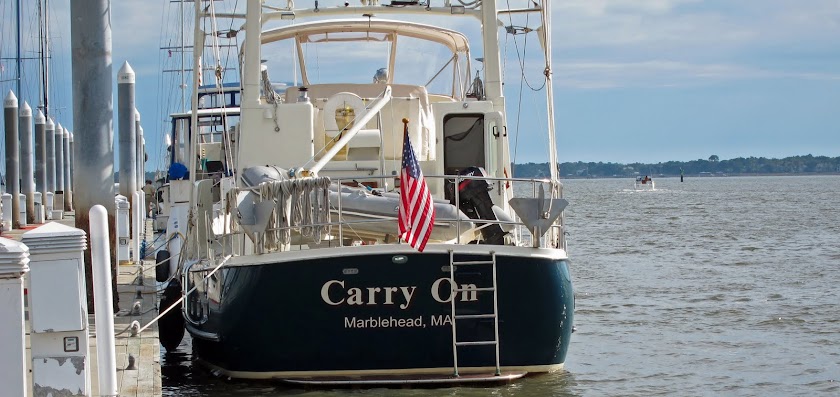 |
| Anhinga Drying Out |
I’ve been interested in going to the Everglades, the third largest National Park in the US, since last winter, our first trip to South Florida. So last week we made a day trip down, entering the park near Homestead, the most accessible of the three entrances from the Miami area. We packed a picnic lunch, lots of water and insect repellent, although we almost didn’t need the last. We had been warned that amenities were few in the park outside Flamingo, where even the park run lodging is closed indefinitely due to hurricane damage.
We explored the Ernest Coe Center, checked out the bookstore and exhibits and went to meet the ranger for a guided walk on the Anhinga Trail. From what I know I would say that Anhingas are similar to Cormorants, although somewhat larger than those we commonly see in New England. They have a similar habit of spreading their wings to dry, as they are unable to fly with the extra weight of the water their feathers carry after being submerged. We have seen a few of these birds on the ICW in South Florida, but never so up close and personal as the many we saw on our walk.
 |
| Everglades Cat & Mouse |
It’s the dry season now and also alligator mating season (who knew?) so the alligators are beginning to congregate in “holes” with enough water to support them. The holes are shared with all the species of birds one would expect— white ibis, Great Blue Herons, Little Blue Herons, Snowy and Great Egrets, Wood Storks and Moorhens, a pretty little brown and blue bird, new to me. We and our fellow Anhinga trail walkers were transfixed by what seemed to be an elaborate cat and mouse game between the alligators and the wading birds. When the sleepy looking gators began to slowly move into the water, the birds warily moved a foot or two back. After the gators moved on, the birds resumed fishing until the next gator appeared. The sequence was repeated again and again. We were told that alligators need to eat only every couple of weeks, but when they’re hungry can be quite indiscriminate, even, the ranger reported, feeding on another smaller gator, as he recently witnessed. Quite a lesson in the food chain!
 |
| Gator Hole |
After a drive down the road, a picnic lunch and another long drive down the road towards Flamingo, we made an excursion to the Mahogany Hammock, a seven hundred (or so) year old stand of mahogany trees, thought to be the oldest hardwood stand in North America. The park’s winding boardwalk through the grove was beautiful, but the scene stealer of the day were a pair of Barred Owls. Only four days old, these downy creatures were brought to our attention by a couple, with binoculars and a camera with a huge telephoto lens, fixed in mid-trail. I’m afraid we would have walked right by without their presence blocking the boardwalk. Instead, we were treated to a visit by the mother Barred Owl, a beautiful creature so named for her lovely striped brown and white foliage, who had come to bring the babies food. The babies, unable to fly before 42 days, were surprisingly large for their young age—they also looked a lot like very appealing lemurs!
 |
| Baby Barreds |
That was it for the day, albeit a satisfying “it”. I will go back again next year, perhaps with my bird-watcher sister for an overnight trip. There is much to see in the Everglades and much to learn about man’s interaction with a natural phenomenon responsible for the water supply and ecology of South Florida. I am almost finished reading The Everglades, River of Grass by Marjorie Stoneman Douglas, written in 1947 but still relevant, which details the geological formation and anthropological history of the Everglades. I highly recommend it for an appreciation of this vast area of sawgrass, seasonal flowing water and a very important, endangered ecological system.
Thanks to Sibley’s Field Guide to Birds for references!
 |
| Ferocious Felus Catus (Really!) |
Please note that there is a new link under, "Subscribe To," at the upper right side of the blog just below "Our Location" . If you subscribe by clicking on the link "Posts", you will be notified when a new post to the Carry On blog is available.

No comments:
Post a Comment